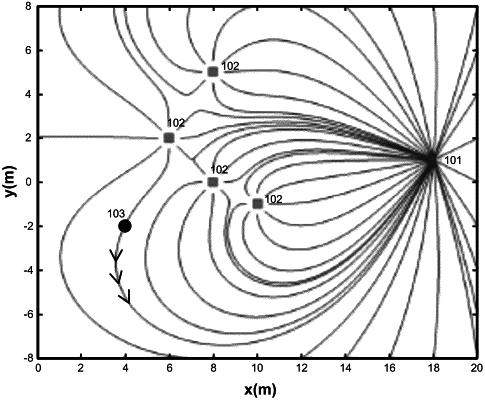| CPC G05D 1/1064 (2019.05) [B64C 39/024 (2013.01); G05D 1/0088 (2013.01); B64U 2201/10 (2023.01)] | 30 Claims |

|
1. One or more computing systems for identifying a travel direction for a vehicle to avoid objects, the one or more computing systems comprising:
one or more computer-readable storage media storing computer-executable instructions that, when executed, control the one or more computing systems to, for each of a plurality of intervals:
receive object locations of detected objects, the object locations being identified from return signals of signals transmitted by a sensor array, each object location specifying a single point;
receive external object information provided by an external object system, the external object information for objects includes object location, speed, and type of objects;
assign a repel value to the object location of each object, the repel value indicating a repulsive force exerted in a direction from the object location to a current location of the vehicle, at least some of the repel values being based on speeds and types provided by the external object system;
predict a target location of a moving target object, the predicted target location being one of a plurality of predicted target locations of the target object designated along a predicted target path of the target object;
assign an attract value to the target location, the attract value indicating an attractive force exerted in a direction from the current location to the target location;
calculate an attract-repel field for the current location based on the repulsive forces and their directions and the attractive force and its direction, the attract-repel field being a vector with a direction;
cause the travel direction of the vehicle to be set in the direction of the attract-repel field; and
control the vehicle to travel in the travel direction;
and one or more processors for executing the computer-executable instructions stored in the one or more computer-readable storage media.
|